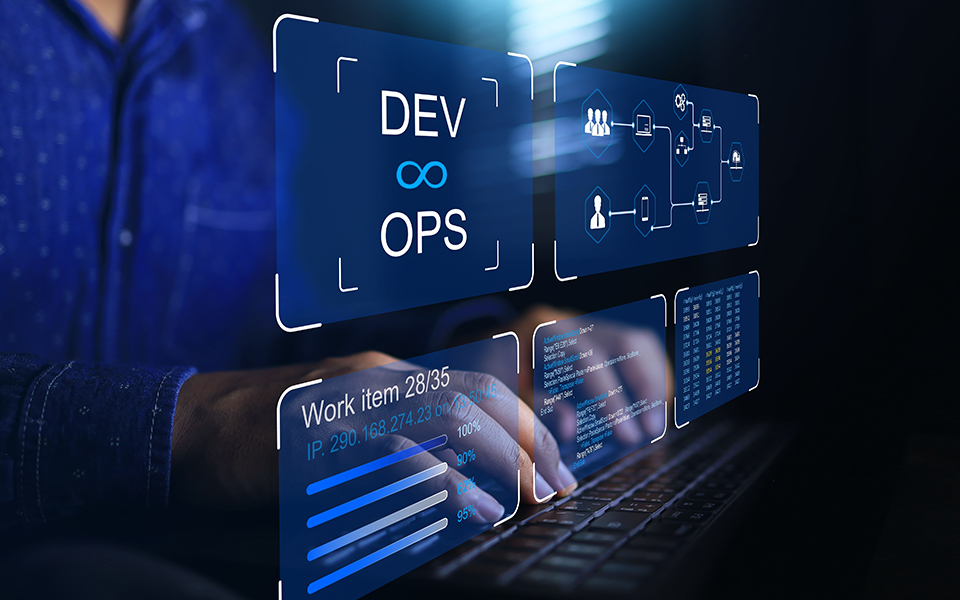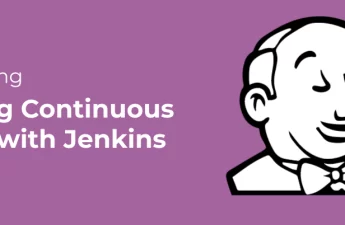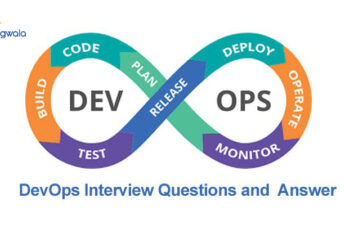6 DevOps Trends Watch of 2023
While security has always remained one of the biggest challenges for organizations, GitOps made a great move with cloud-native deployments, especially Kubernetes-related deployments. Many such trends positively impacted developers and organizations. However, keeping up with technological advancements and trends is very difficult. To make your lives easier, we are compiling some DevOps trends that will significantly impact the coming year.
Let us see those trends and how they will impact developers and organizations.
Increase in Kubernetes adoption and deployments
Kubernetes has experienced a significant increase in adoption and deployments over the years, and this trend is likely to continue. Kubernetes is an open-source container orchestration platform that provides a robust and scalable infrastructure for deploying, managing, and scaling containerized applications.
- Growing Popularity: Kubernetes has gained widespread popularity as an open-source container orchestration platform due to its ability to simplify application deployment and management across various environments.
- Scalability and Portability: Kubernetes provides a robust infrastructure for deploying, managing, and scaling containerized applications. It abstracts away the underlying infrastructure complexities, allowing organizations to easily scale their applications and run them on different environments, such as on-premises data centers, public clouds, or hybrid setups.
- Simplified Management: Kubernetes simplifies the management of containerized applications by providing a consistent API and control plane. It automates tasks like load balancing, scaling, and self-healing, reducing the operational overhead of managing applications.
- RazorOps as a DevOps Automation Platform: RazorOps is a DevOps automation platform that focuses on streamlining the deployment and management of applications on Kubernetes. It offers tools and workflows for automating the build, test, and deployment processes, making it easier for development teams to adopt Kubernetes as their deployment target.
- Continuous Integration and Deployment (CI/CD): RazorOps enables organizations to set up CI/CD pipelines for automating the application deployment process. This allows for faster and more efficient delivery of software updates, reducing time-to-market and improving overall development productivity.
- Version Control Integration: RazorOps integrates with version control systems like Git, allowing teams to easily manage and track changes to their application code. This ensures consistency and traceability throughout the development and deployment process.
- Infrastructure as Code (IaC): Razorops supports infrastructure as code practices, where infrastructure resources are defined and managed through code. This approach enables teams to treat infrastructure as part of their application codebase, leading to more reliable and reproducible deployments.
- Monitoring Capabilities: RazorOps provides monitoring and observability features, allowing teams to gain insights into the performance and health of their applications deployed on Kubernetes. This helps in identifying and resolving issues quickly, ensuring optimal application performance.
- Developer Productivity: By automating repetitive tasks and providing a streamlined workflow, Razorops helps developers focus more on application development rather than spending time on infrastructure management. This improves overall developer productivity and enhances the speed of application delivery.
Security automation will gain momentum
Security automation is set to gain significant momentum due to the increasing concerns about cybersecurity and the complexity of modern IT environments. As organizations face growing numbers of sophisticated cyber threats, the manual handling of security tasks becomes inadequate and error-prone.
- Automation offers numerous advantages in this context, including enhanced efficiency, accuracy, and rapid response to security incidents.
- By leveraging machine learning and artificial intelligence, automated security systems can analyze large amounts of data in real time, promptly detecting and responding to potential threats. Furthermore, automation ensures consistent enforcement of security policies across the entire infrastructure, reducing the risk of misconfigurations and deviations.
- Integration with DevSecOps practices allows security to be seamlessly integrated into the software development and deployment lifecycle. Compliance and auditing processes are also streamlined through security automation, as it facilitates adherence to regulatory requirements and generates audit logs.
- By continuously monitoring and remediating security issues, organizations can proactively safeguard their systems and applications.
- In summary, security automation provides a robust solution for organizations seeking to strengthen their security posture, mitigate risks, and efficiently manage the complexities of cybersecurity.
Integration with CI/CD Pipelines
Integration with CI/CD (Continuous Integration/Continuous Deployment) pipelines is an important aspect of software development and deployment. It allows for the automation of various tasks involved in the software development lifecycle, such as building, testing, and deploying applications. Here are some key points to consider when integrating with CI/CD pipelines:
- Version Control Integration: CI/CD pipelines typically rely on version control systems like Git to track changes in code repositories. Ensure that your application code is stored in a version control system, and configure your CI/CD pipeline to monitor and trigger builds based on changes to the code.
- Build Automation: CI/CD pipelines automate the process of building your application. Define build scripts or configuration files (e.g., using tools like Jenkins, Travis CI, or CircleCI) that specify the steps required to compile your code, package dependencies, and generate the artifacts.
- Test Automation: Automating testing is a crucial part of CI/CD pipelines. Configure your pipeline to execute various types of tests, such as unit tests, integration tests, and end-to-end tests. You can use frameworks like JUnit, Selenium, or pytest to write and execute tests automatically during the pipeline execution.
- Artifact Management: CI/CD pipelines generate build artifacts that need to be stored and managed. Artifacts may include compiled binaries, libraries, or container images. Consider using artifact repositories like Nexus or JFrog Artifactory to store and manage these artifacts.
- Continuous Deployment: Once the code is built and tested successfully, CI/CD pipelines facilitate the deployment of the application to different environments (e.g., development, staging, production). Define deployment scripts or configurations to automate the process of deploying your application, ensuring consistency and reproducibility across environments.
- Infrastructure as Code: Infrastructure provisioning is often automated as part of CI/CD pipelines using tools like Terraform or AWS CloudFormation. Infrastructure configurations can be version-controlled alongside the application code, allowing for infrastructure changes to be tracked and deployed in a controlled manner.
- Monitoring and Feedback: Incorporate monitoring and feedback mechanisms into your CI/CD pipelines to gather metrics and insights about the application’s performance, stability, and user experience. Integration with tools like Prometheus, Grafana, or Datadog can help you track and visualize relevant metrics.
- Rollbacks and Roll-forwards: CI/CD pipelines should include mechanisms to handle rollbacks or roll-forwards in case of failures during deployment. This ensures that you can easily revert to a previous working state or proceed with a new version when issues arise.
By integrating with CI/CD pipelines, you can automate repetitive tasks, increase development speed, ensure consistent deployments, and maintain a high level of quality in your software development and release process.
Docker will continue to enhance the developer experience
Docker has revolutionized the developer experience by simplifying application packaging and providing a range of benefits. With Docker, developers can easily package their applications and their dependencies into containers, ensuring consistent behavior across different environments. This simplification eliminates the complexities associated with environment setup and compatibility issues, allowing developers to focus more on writing code and less on environment configuration
- Simplified Application Packaging: Docker provides a straightforward and consistent way to package applications and their dependencies into containers. This simplifies the process of application deployment, making it easier for developers to package their applications and ensure consistent behavior across different environments.
- Reproducible Environments: Docker allows developers to define the entire application environment in a Dockerfile, including the required libraries, dependencies, and configurations. This ensures that the development environment can be easily replicated, eliminating the “it works on my machine” problem and improving collaboration among team members.
We predict that Docker isn’t dead and it still has a lot to offer. With recent improvements, Docker will again emerge as a DevOps super tool.
Github gains even more trust
Github has solidified its position as a trusted platform for version control and source code management. With robust security measures in place, including encryption, authentication, and access controls, Github ensures the protection of user data and code repositories. It’s widespread adoption and a large community of users further enhance its credibility and trustworthiness. The platform promotes collaboration and transparency through features like pull requests, code reviews, and issue tracking, enabling developers to work together seamlessly and openly. Integration with a wide range of development tools and its reliable version control system make Github an invaluable asset for developers, enhancing productivity and ensuring the integrity of code. Additionally, Github’s support for the open-source community and its commitment to hosting and facilitating contributions further instill trust in the platform. Overall, Github’s security, industry recognition, collaborative features, integrations, and strong community contribute to its growing trustworthiness among developers and organizations worldwide.
Internal developer platforms become more important
Internal developer platforms are expected to become increasingly important for organizations due to several key factors:
- Streamlined Development Processes: Internal developer platforms provide a centralized and standardized environment for developers to work on their projects. These platforms offer a suite of tools, services, and frameworks that facilitate efficient development processes, reducing the time and effort required to set up and configure development environments.
- Increased Collaboration and Knowledge Sharing: Internal developer platforms foster collaboration among developers by providing shared resources, communication channels, and documentation. This facilitates knowledge sharing, code reviews, and team collaboration, leading to improved productivity and faster problem-solving.
- Consistent and Scalable Infrastructure: Developer platforms offer standardized infrastructure and deployment pipelines that can be easily replicated and scaled. This ensures consistency across projects, reduces configuration errors, and enables seamless scalability as the organization grows.
- Rapid Onboarding and Time-to-Value: Internal developer platforms provide a streamlined onboarding experience for new developers. By having pre-configured development environments, templates, and documentation, these platforms accelerate the onboarding process, allowing developers to start delivering value more quickly.
- DevOps and Automation Capabilities: Developer platforms often integrate with DevOps tools and automation frameworks, enabling continuous integration, continuous deployment (CI/CD), and infrastructure as code practices. This promotes efficient and reliable software delivery, enhancing development productivity and quality.
Multi-cloud deployments will be on the rise
Multi-cloud deployments are becoming increasingly popular in the tech world and are the best way to go. With multi-cloud deployments, you can easily expand your digital infrastructure, reduce costs, and increase the efficiency of your operations. Multi-cloud deployments are a cloud computing architecture where applications and services are deployed across multiple cloud providers. This means that instead of relying on a single cloud provider, you can use the resources of multiple cloud providers to host your applications and services. The primary advantage of multi-cloud deployments is that they allow you to access diverse services and platforms. Organizations use this approach to ensure they use the best-in-class services from each cloud provider. This strategy also ensures the cloud providers’ services are always up and available, so there are rare chances of downtimes with your applications.
We predict that a multi-cloud approach will become necessary for organizations to sustain and have more flexibility over their workloads.





1 thought on “6 DevOps Trends Watch of 2023”